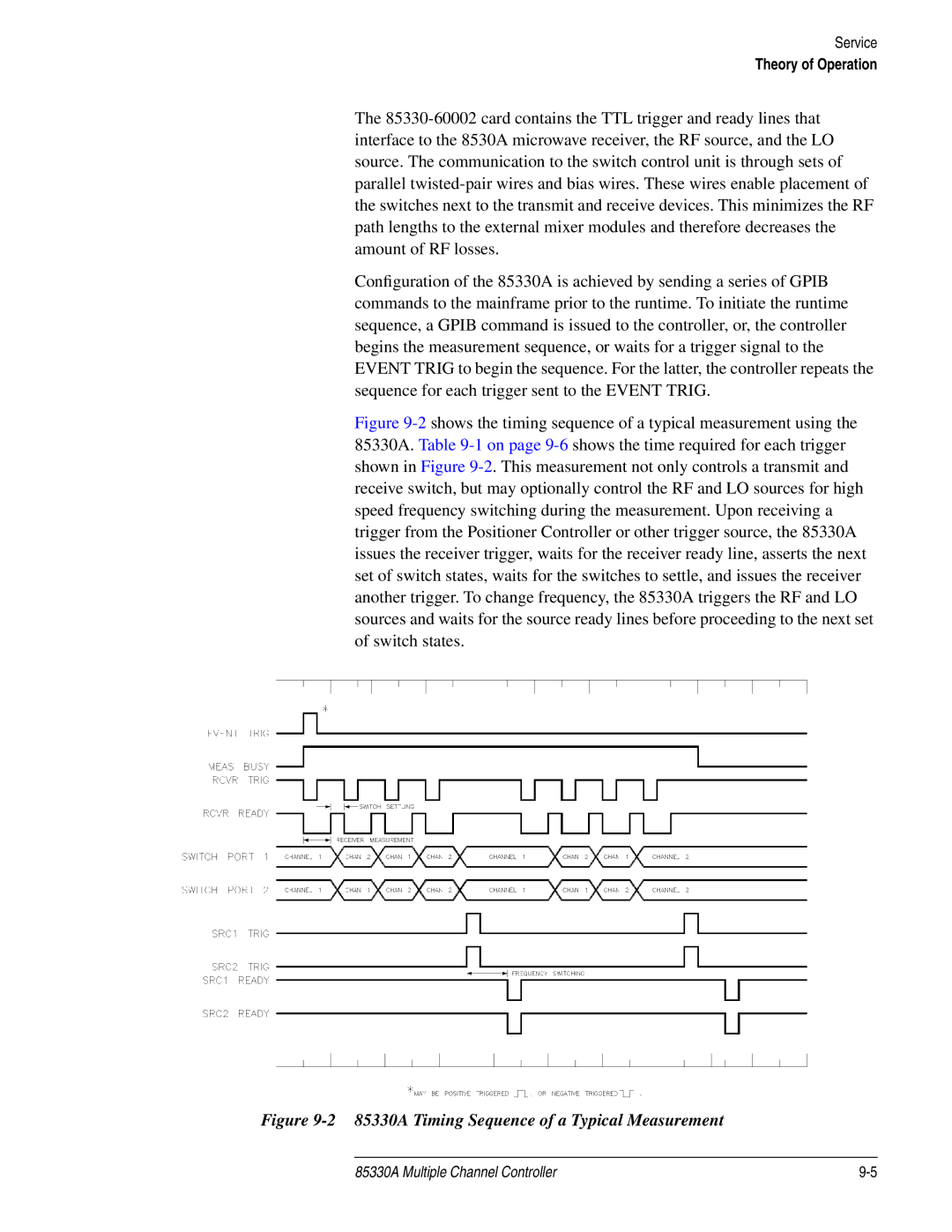
Service
Theory of Operation
The
Configuration of the 85330A is achieved by sending a series of GPIB commands to the mainframe prior to the runtime. To initiate the runtime sequence, a GPIB command is issued to the controller, or, the controller begins the measurement sequence, or waits for a trigger signal to the EVENT TRIG to begin the sequence. For the latter, the controller repeats the sequence for each trigger sent to the EVENT TRIG.
Figure 9-2 shows the timing sequence of a typical measurement using the 85330A. Table 9-1 on page 9-6 shows the time required for each trigger shown in Figure 9-2. This measurement not only controls a transmit and receive switch, but may optionally control the RF and LO sources for high speed frequency switching during the measurement. Upon receiving a trigger from the Positioner Controller or other trigger source, the 85330A issues the receiver trigger, waits for the receiver ready line, asserts the next set of switch states, waits for the switches to settle, and issues the receiver another trigger. To change frequency, the 85330A triggers the RF and LO sources and waits for the source ready lines before proceeding to the next set of switch states.
Figure 9-2 85330A Timing Sequence of a Typical Measurement
85330A Multiple Channel Controller |
